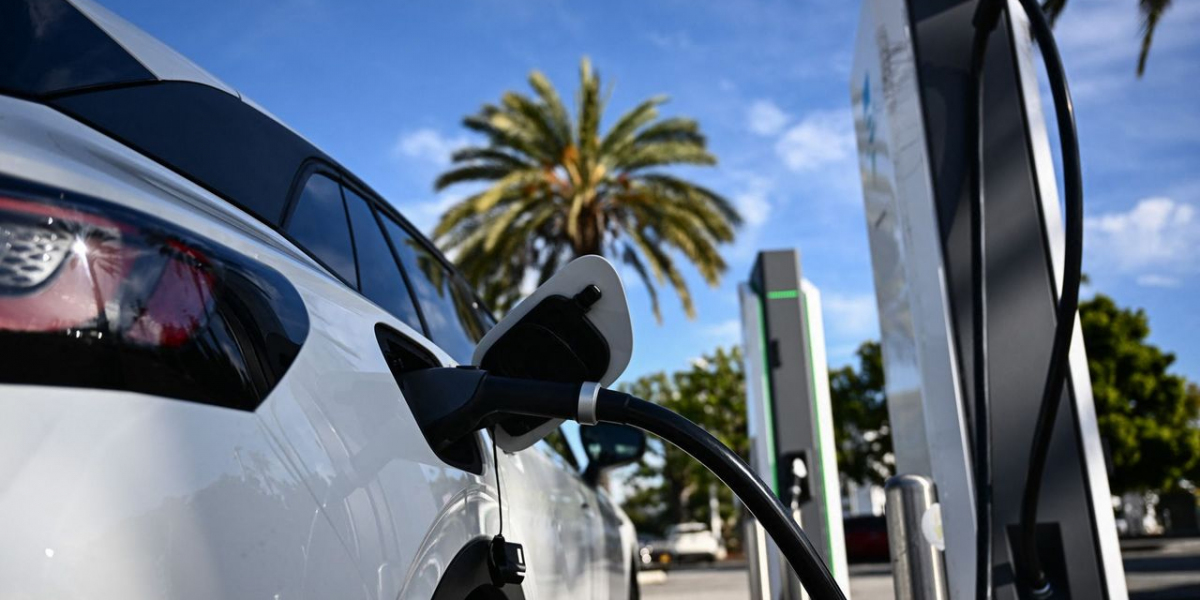As electric vehicles (EVs) become increasingly popular, the demand for EV chargers has surged. Whether for personal use at home or for commercial purposes, installing an EV charger requires careful planning and consideration. This guide explores the best methods for EV charger installation, ensuring efficiency, safety, and compliance with local regulations.
- Understanding EV Chargers
Before diving into installation methods, it’s essential to understand the different types of EV chargers available:
1.1 Level 1 Chargers
- Description: These chargers use a standard 120-volt outlet and provide a slow charge, typically adding 3-5 miles of range per hour.
- Ideal Use: Best suited for home installations where the vehicle can charge overnight.
1.2 Level 2 Chargers
- Description: Operating on a 240-volt circuit, Level 2 chargers offer a faster charge, adding 10-60 miles of range per hour.
- Ideal Use: Recommended for residential and commercial applications where quicker charging is needed.
1.3 DC Fast Chargers
- Description: These chargers provide rapid charging and are often found in public charging stations. They can charge an EV to 80% in about 30 minutes.
- Ideal Use: Best for commercial installations or public charging stations due to their high cost and power requirements.
- Planning for Installation
2.1 Site Assessment
Conduct a thorough assessment of the site where the charger will be installed:
- Location: Choose a location that is easily accessible for the vehicle and allows for proper cable management.
- Electrical Infrastructure: Evaluate the existing electrical panel capacity to determine if upgrades are necessary.
2.2 Electrical Load Calculation
Before installation, calculate the total electrical load to ensure the system can handle the additional demand:
- Consult an Electrician: A licensed electrician can assess the current load and recommend any necessary upgrades to the electrical system.
- Local Regulations: Be aware of local codes and regulations that may affect load calculations and installation procedures.
- Choosing the Right Charger
3.1 Charger Specifications
Consider the following specifications when choosing a charger:
- Power Output: Higher output chargers provide faster charging but require more significant electrical infrastructure.
- Connectivity: Some chargers offer Wi-Fi connectivity for monitoring and scheduling charging times.
- Compatibility: Ensure the charger is compatible with your specific EV model.
3.2 Manufacturer Reputation
Research reputable manufacturers known for quality and reliability:
- Warranty: Look for chargers with robust warranties to ensure long-term support and service.
- User Reviews: Read user reviews to gauge performance and customer satisfaction.
- Installation Methods
4.1 DIY Installation
If you are technically inclined, you might consider a DIY installation. However, this method requires:
- Electrical Knowledge: Familiarity with electrical systems and local building codes.
- Permit Acquisition: Obtaining the necessary permits from local authorities.
- Safety Precautions: Ensuring all safety measures are followed to prevent electrical hazards.
Steps for DIY Installation:
- Gather Tools: Collect necessary tools, including a drill, screwdrivers, and wire cutters.
- Install the Wall Mount: Securely attach the wall-mounted charger bracket to the wall.
- Connect Wiring: Run the appropriate gauge wiring from the electrical panel to the charger location.
- Install the Charger: Attach the charger to the wall mount and connect the wiring according to manufacturer instructions.
- Test the Charger: After installation, test the charger to ensure it functions correctly.
4.2 Professional Installation
For most homeowners and businesses, hiring a professional electrician is the safest and most efficient method:
- Experience: Licensed electricians have the necessary expertise to handle complex electrical installations.
- Code Compliance: Professionals ensure that the installation meets local codes and regulations.
- Safety: Hiring an expert reduces the risk of electrical accidents and equipment damage.
Steps for Professional Installation:
- Initial Consultation: The electrician assesses the site and discusses options with the homeowner or business owner.
- Electrical Panel Upgrade: If necessary, the electrician upgrades the electrical panel to accommodate the new charger.
- Permit and Inspection: The electrician handles permit acquisition and schedules any required inspections with local authorities.
- Installation: The electrician installs the charger, ensuring proper wiring and mounting.
- Final Testing: After installation, the electrician tests the charger to confirm its functionality.
- Safety Considerations
Safety is paramount when installing EV chargers. Here are some key safety measures to consider:
5.1 Electrical Safety
- Proper Grounding: Ensure the charger is properly grounded to prevent electrical shocks.
- Circuit Protection: Use circuit breakers or fuses to protect the electrical system from overload.
5.2 Environmental Considerations
- Weatherproofing: For outdoor installations, choose chargers that are rated for outdoor use and can withstand various weather conditions.
- Cable Management: Properly manage cables to prevent tripping hazards and damage to the charging equipment.
- Costs Involved
The cost of EV charger installation can vary widely based on several factors:
6.1 Charger Cost
- Level 1 Chargers: Generally range from $300 to $600.
- Level 2 Chargers: Typically cost between $500 and $1,500, depending on features and power output.
- DC Fast Chargers: These can range from $10,000 to $40,000, including installation.
6.2 Installation Costs
- DIY Installation: The primary costs are for the charger and any necessary materials.
- Professional Installation: Labor costs can range from $100 to $200 per hour, with total installation costs averaging between $1,000 and $2,500, depending on the complexity of the job.
6.3 Incentives and Rebates
- Federal and State Incentives: Check for available incentives or rebates for installing EV chargers, which can significantly reduce overall costs.
- Utility Company Programs: Some utility companies offer programs that provide discounts or incentives for EV charger installations.
- Conclusion
Installing an EV charger is a critical step towards supporting the transition to electric vehicles. Whether you choose a DIY approach or hire a professional, understanding the types of chargers, planning the installation, and considering safety and costs are essential to a successful installation. With the right preparation, you can enjoy the convenience of charging your EV at home or providing charging services to your customers, contributing to a more sustainable future.









